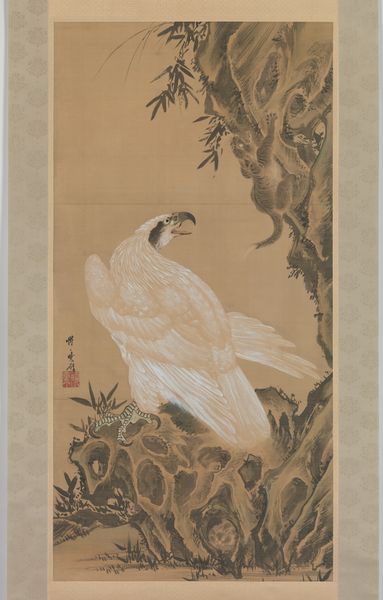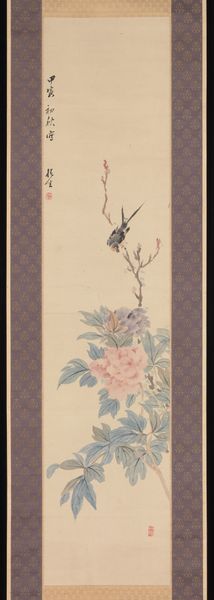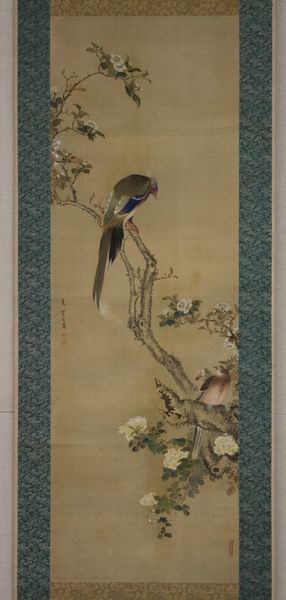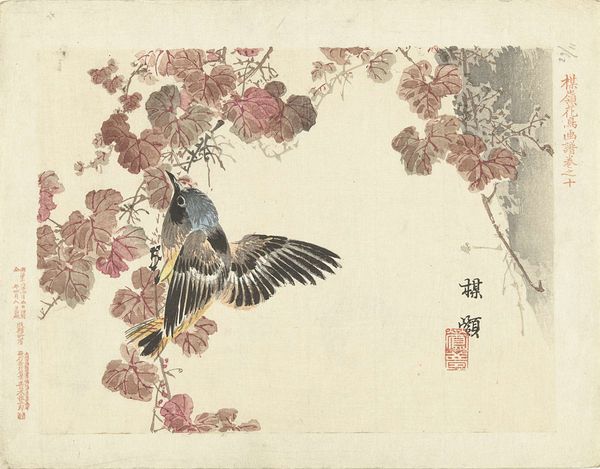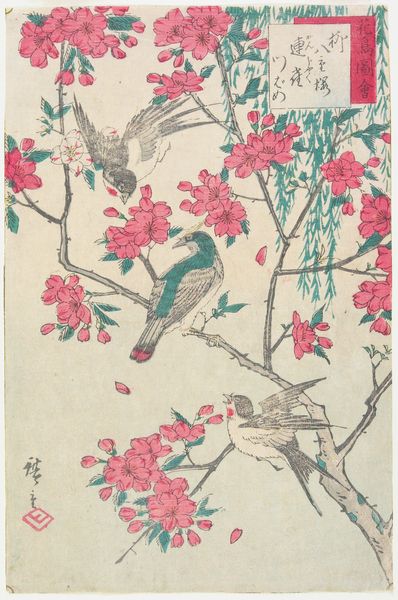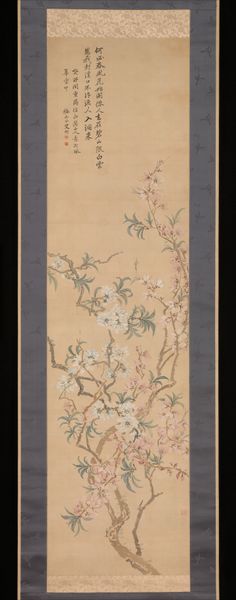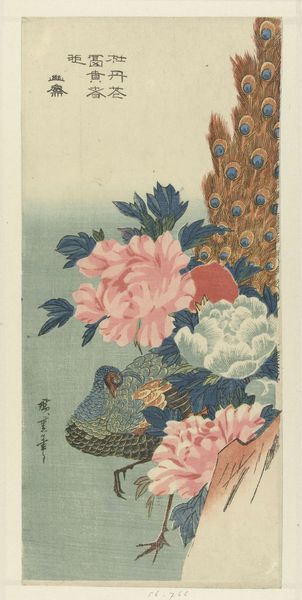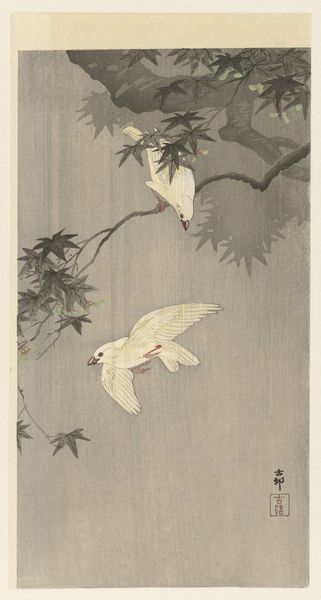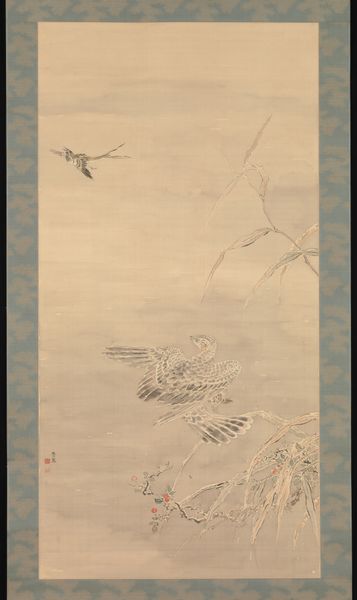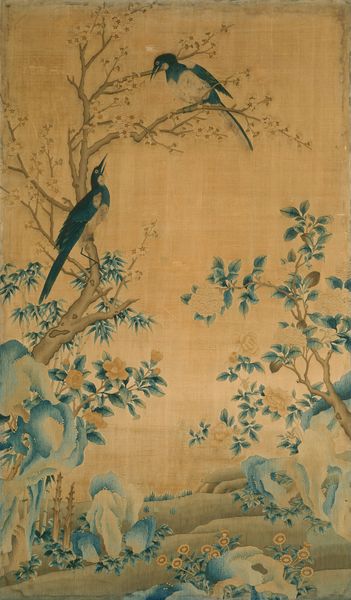
tempera, painting, watercolor, ink
#
tempera
#
painting
#
asian-art
#
landscape
#
figuration
#
watercolor
#
ink
#
coloured pencil
#
underpainting
#
orientalism
Dimensions: height 134.5 cm, width 57 cm, width 63.6 cm, width 692 mm, diameter 44 mm, diameter 27 mm, height 7.5 cm, width 73 cm, depth 8 cm
Copyright: Rijks Museum: Open Domain
Wang Ying created "Magpies, Pomegranates, and Hibiscus" with ink and color on paper. The composition cascades down the scroll in a continuous flow. The eye is drawn from the delicate hibiscus blossoms and pomegranates at the top to the lively magpies clustered lower down. Observe how the artist uses a limited palette. The muted greens, pinks, and earth tones create a sense of harmony and balance. The sharp blacks and whites of the magpies provide a striking contrast. The painting employs traditional motifs that invite semiotic interpretation. The magpies symbolize joy and good fortune, while pomegranates represent fertility and abundance. These symbols, combined with the hibiscus, create a visual poem expressing wishes for prosperity and happiness. Note how Wang Ying's formal structure, with its delicate balance between naturalistic representation and symbolic meaning, demonstrates the continuous interplay between aesthetic form and cultural significance.
Comments
rijksmuseum almost 2 years ago
⋮
The painter has here depicted a lively scene in a naturalistic manner. The combination of flowers and birds lends itself well for interior decoration, and also often has a symbolic meaning. Here the magpies stand for good fortune, the pomegranates for prosperity, and the hibiscus for successfully passing exams.
Join the conversation
Join millions of artists and users on Artera today and experience the ultimate creative platform.
